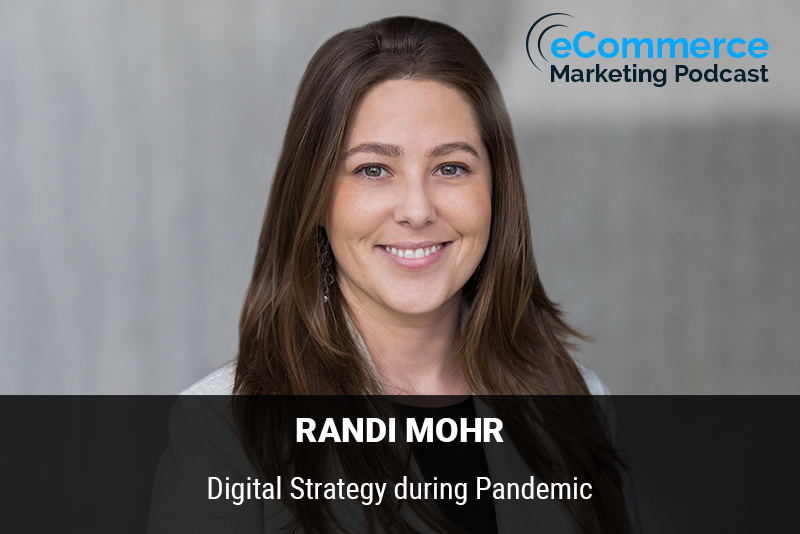
The eCommerce Marketing Podcast walks you through everything that goes into ecommerce marketing — from inbound marketing to paid advertising to conversions. Learn the strategies top marketing experts use to grow their businesses.
Marketing Strategies Revealed in this Episode:
- What makes a digital strategy data-driven and customer-focused
- How do marketers today crisis-proof their marketing plans
- What is a framework of crisis-proof digital strategy
- How to measure the efficacy of these crisis proof marketing strategies

Episode Title: Data-Driven Digital Marketing Strategies with Randi Mohr
Host: Arlen Robinson
Guest: Randi Mohr, Vice President of Customer Success and Marketing for Whereoware
In this episode of the E-commerce Marketing Podcast, Arlen Robinson interviews Randi Mohr about the importance of data-driven decisions and customer-focused digital marketing strategies. Randi shares insights on how businesses can utilize data to enhance their marketing efforts, the necessity of being agile, and how to create a crisis-proof marketing plan.
Key Takeaways:
- Introduction and Randi’s Background [00:00 – 03:30]
- Randi’s career transition from trade show industry to digital marketing [01:30].
- Her role at Whereoware overseeing customer success and marketing efforts [02:30].
- Data-Driven and Customer-Focused Strategies [03:30 – 09:00]
- The need to center digital strategies around the customer to motivate desired actions [04:00].
- Importance of reducing friction in customer experience to avoid losing customers to competitors [06:00].
- The Role of Data in Marketing [09:00 – 14:00]
- Utilizing data to understand customer behavior and optimize marketing strategies [09:30].
- Monitoring outcomes to drive desired customer actions and achieve business goals [12:00].
- Crisis-Proofing Marketing Plans [14:00 – 19:00]
- Importance of agility and flexibility in marketing plans to adapt to changing conditions [15:00].
- Utilizing data to support and measure effectiveness in real-time for necessary adjustments [17:30].
- Channel Diversity and Experimentation [19:00 – 25:00]
- The need for a balanced approach combining offline and e-commerce channels [19:30].
- Importance of experimenting with small adjustments to improve marketing outcomes [22:00].
- Measuring the Effectiveness of Marketing Strategies [25:00 – 30:00]
- Setting quarterly plans and adjusting based on data analysis [25:30].
- Measuring standard metrics and aligning them with desired customer actions [28:00].
Guest Info:
- Name: Randi Mohr
- Position: Vice President of Customer Success at Whereoware
- Website: Whereoware
Connect with Randi Mohr:
- Email: [email protected]
For more insights and to connect with Randi Mohr, visit her on LinkedIn.











